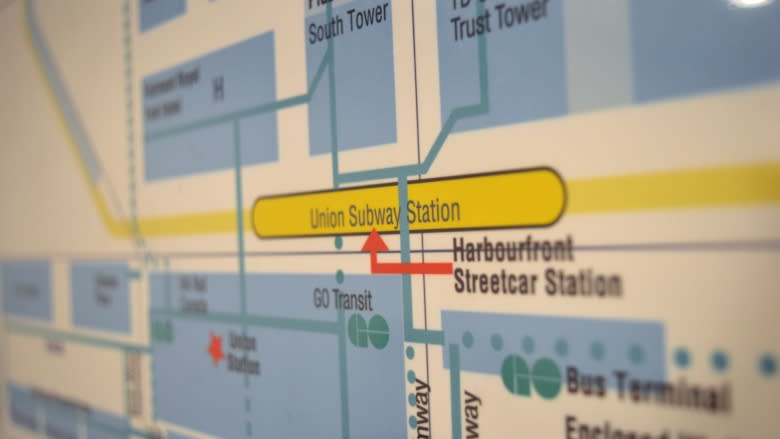New PATH map concept a 'significant step forward' for users, says expert
Many of the 200,000 pedestrians who navigate the the 30-kilometre maze of the underground PATH system may soon find the experience a bit easier, after the release of a preliminary map proposal by the Toronto Financial District BIA on Monday, which one expert says is "a significant step forward."
The PATH is "very, very challenging" to navigate, said Richard Joy, executive director of Urban Land Institute Toronto and frequent PATH user.
"It was never designed for the first-time user. It's a tourist trap in that tourists can be literally lost and trapped underground," he says. "It's sort of really for frequent, ongoing users."
Joy says many find the underground network that connects over 1,000 shops underneath more than 50 buildings in the downtown core confusing and disorienting, due to users not knowing names of buildings and maps not providing a sense of scale or direction.
"Sometimes you don't know if you're going north, east, south or west at any given moment," he says. "You may be going one way and think you're making progress only to find you're going in the wrong direction."
'More approachable, user-friendly experience'
Joy says the new concept map, which will be on display inside the Royal Bank Plaza until Oct. 14, "is a significant improvement for a more approachable, user-friendly experience for more people."
He says the map includes graphics of iconic and recognizable Toronto landmarks — such as the CN Tower and city hall — as well as estimated walking times while in particular zones, all of which he says give people a sense of scale and orientation.
Joy also commends the addition of clearly marked trunk lines — or main routes of the PATH — and capillary lines that make navigating speedier and more efficient.
Though he says the new map does not address all user experience issues, and that those issues may always exist in the PATH — "wayfinding has always been its weak point" — Joy believes the additions mark a "significant step forward" for what he calls "one of Toronto's great land-use triumphs."
"No city has accomplished anything as complex or successfully as this, no city has anything comparable" says Joy.
"People often forget about the PATH, but it's something to celebrate."



